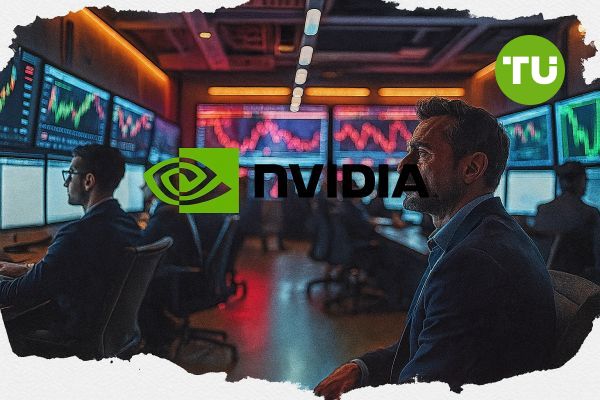Nvidia stock jumps 4% after China sales reboot approved
 Demand for Nvidia’s products continues to surge in the global AI infrastructure space
Demand for Nvidia’s products continues to surge in the global AI infrastructure space
As of July 16, Nvidia stock is trading at $170.70, up 4% in the past 24 hours following optimism over its China business.
This move follows a U.S. government decision to grant Nvidia limited export licenses for AI chips to Chinese firms.
Highlights
- Nvidia rose 4% to $170.70 after receiving U.S. approval to resume limited AI chip exports to China. - The stock broke above key resistance levels with rising volume and strong technical momentum.
- Analysts raised price targets to as high as $200, citing renewed growth potential and robust AI demand.
Technical indicators suggest continued bullish momentum for Nvidia. The stock has cleanly broken above the short-term resistance zone between $165 and $168, supported by strong trading volume. This breakout points to a potential move toward the next resistance level in the $180 to $185 range. The 50-day moving average sits at approximately $155, providing solid technical support, while the 200-day moving average is around $140, reinforcing the broader uptrend.
Nvidia’s relative strength index (RSI) is currently near 67, approaching overbought territory but still leaving room for further upside. The moving average convergence divergence (MACD) indicator remains in positive territory and is widening, indicating ongoing bullish momentum. With increasing volume on green days and a sustained break above its near-term range, Nvidia appears to be entering a new leg of its rally.

Nvidia stock price dynamics (May 2025 - July 2025). Source: TradingView
Recent trading data also reveals strong institutional interest. The average daily volume for Nvidia over the past 10 trading sessions is approximately 47 million shares, compared to a 30-day average of 41 million—an increase of nearly 15%. This surge in volume on up days underscores accumulation rather than speculative activity.
China sales, analyst upgrades, and AI demand
The broader context for Nvidia’s rally is rooted in key geopolitical and fundamental drivers. On July 15, the U.S. government confirmed that it would allow Nvidia to sell modified versions of its AI chips, including the H20 and potentially the upcoming Blackwell-based processors, to Chinese firms under a controlled licensing framework. This policy clarification follows months of regulatory uncertainty and was viewed by the market as a de-escalation in tech trade tensions. The approval revives what had been estimated as up to $8 billion in lost or delayed revenue from Chinese buyers earlier in 2024. Wall Street responded swiftly: analysts from Mizuho, Barclays, Bernstein, and Jefferies raised their price targets, with many now in the $185 to $200 range.
In parallel, demand for Nvidia’s products continues to surge in the global AI infrastructure space. Blackwell chip adoption by hyperscalers like Amazon, Google, and Microsoft remains strong, reinforcing Nvidia’s market dominance. AI server deployments are scaling quickly, and Nvidia’s software ecosystem—anchored by CUDA and DGX—continues to create high switching costs for customers. This broader AI boom supports premium valuations. Nvidia’s market capitalization recently touched $4 trillion in early July, making it the most valuable public company globally at the time. The latest news about China re-entry adds a new growth lever at a time when competition from AMD and Intel remains subdued in the high-end AI segment.
Base case supports move toward $185–$190
Looking ahead, Nvidia’s short-term price action is likely to remain bullish. In the base case scenario, the stock consolidates above $165 and builds toward $180 to $185 in the coming weeks, fueled by positive news flow and technical momentum. If execution in the Chinese market proceeds smoothly and Q3 earnings guidance is raised—another possible outcome—the stock may test $190 or even $200 by late Q3.
This bull case assumes no reversal in U.S. trade policy. On the other hand, a retracement scenario could unfold if the licensing policy becomes more restrictive or if the company faces delays in chip shipments. In that event, the stock could pull back toward $155, where the 50-day moving average should offer support.
CEO Jensen Huang’s recent remarks emphasized Nvidia’s future focus on robotics and AI infrastructure, projecting strong long-term growth. His comments have strengthened investor confidence, especially among institutions targeting long-term AI exposure.













































































































































